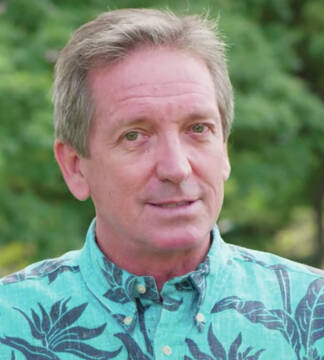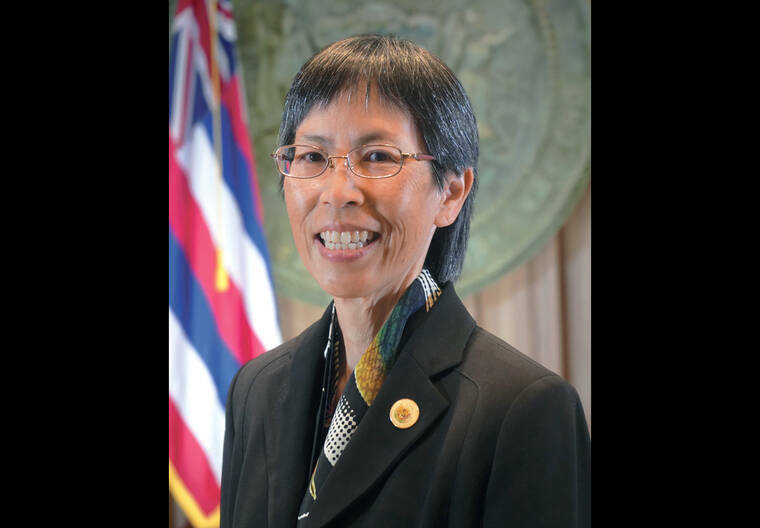The Hawaii Department of Health has ordered 9,200 doses of bivalent COVID-19 vaccination boosters for children as young as 6 months old, with 1,500 being shipped directly to Hawaii Island.
The order was placed after the U.S. Food and Drug Administration on Dec. 8 issued emergency use authorization for the keiki-appropriate doses.
“The authorization of these updated bivalent vaccines comes at a good time,” said state Health Director Elizabeth Char in a press release. “Now young children can get the same protection adults have as families gather for the holidays.”
The KTA Super Stores pharmacy in Hilo already has received 100 doses of the smaller-sized Moderna bivalent boosters, although under state law, the pharmacy is only able to administer doses to children ages 3 and up.
“We’re doing it by appointment,” confirmed Megan Arbles, KTA pharmacy manager, who added demand has been slow so far.
“Even the Moderna for the 3- to 5-year-olds for the monovalent primary series was a little bit slow in uptake,” Arbles said. “We so far haven’t had too much interest in the bivalent booster.”
Children ages 6 months through 5 years old who completed their first two-dose in a primary series of Moderna shots are eligible for the Moderna bivalent booster two months after their final primary shot. Those who received two doses of Pfizer’s primary series can receive a Pfizer bivalent booster as their third primary dose, but keiki who completed all three doses of Pfizer’s primary series are not yet eligible to receive a bivalent booster.
“Shipments have begun to arrive and will continue to arrive as the week continues,” said DOH spokesman Brooks Baehr. “DOH encourages parents to discuss COVID-19 vaccines and boosters with their children’s pediatricians.”
The DOH has reported low vaccination rates for the 6 months to 4 years old age group, with just 5% statewide having completed a primary series, and 9% having received at least one dose.
The turnout for bivalent boosters has been slow among adults, as well, with just 20.8% of those eligible having received a bivalent booster in Hawaii.
“DOH strongly encourages people to get their bivalent booster shot, especially if it has been six months since their last shot,” said Baehr. “Bivalent boosters are especially important for kupuna and people with compromised immune systems.”
Recently, one of the medications used to treat people with severe COVID-19 illnesses, known as bebtelovimab, was pulled from the market by the FDA.
“One of the medications that was successful in treating people who already have COVID is no longer available,” said Baehr. “The medication, called bebtelovimab, was pulled off the market because it isn’t effective against the most common subvariants.”
A recent variant report released by the DOH on Dec. 6 shows omicron BA.5 remains the dominant variant throughout Hawaii County, accounting for 36% of total cases.
The report also showed a rise in other variants including omicron BQ.1 and BQ.1.1, which together make up 44% of cases on Hawaii Island. BF.7 is on the rise as well, accounting for 7% of all cases in the county.
“All three of these subvariants (BQ.1, BQ.1.1, and BF.7) are better at evading immunity than previous strains of SARS-CoV-2,” said Baehr. “However, all three are descendants of the omicron BA.5 subvariant. The updated bivalent boosters are formulated to protect against BA.5.”
Bivalent boosters, including for the younger age group, are still available via federal funding, making them free at various locations that can be found at www.hawaiicovid19.com/vaccine.
As the holiday season approaches, the DOH recommends that people celebrating stay up to date on their vaccinations, wash their hands, wear masks when necessary, stay home when sick, and gather outdoors when possible.
“Hawaii’s statewide 7-day average daily case count increased from 137 cases per day on November 30 to 182 cases per day on December 7,” said Baehr. “The past couple of years, Hawaii has experienced increases in COVID-19 case counts during the holiday season. … History tells us we should be extra cautious this time of year.”





